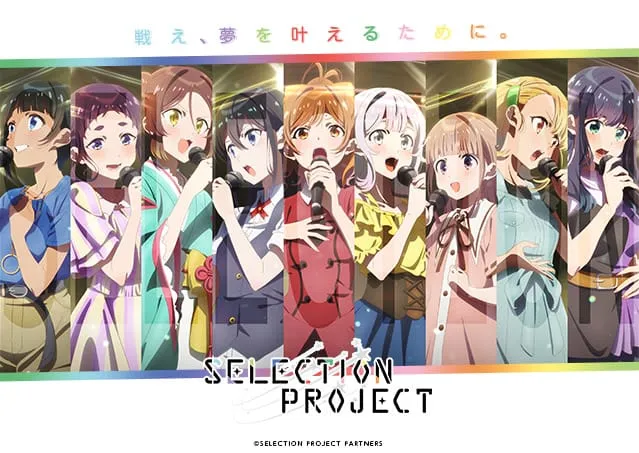
• 7 min read
Snowbreak: Containment Zone
Hello, and welcome back to a new mobile game review post! This time, I checked out a mobile and PC game from Amazing Seasun Games, Snowbreak: Containment Zone!
How I do reviews
I have done reviews of mobile games in the past, but how I did it was kind of tedious, with me taking screen captures of almost every main screen. Starting now, I decided that I needed a new format so that I don't get burned out, and here it is! I review mobile games based on those criteria:
- Gameplay: Core mechanics, and the feel of the game
- Appeal: Characters, story, and other additional elements that contribute to appeal of the game
- Routine Activities: Activities that are routinely done, such as dailies and weeklies
- Events: Limited-time content updates, and the variety it offers.
- Progression System and Gacha: The progression of an account, and gacha system.
Overview: Another post-apocalyptic game!
Snowbreak: Containment Zone is a third-person shooter where you play as an Adjutant who commands Operatives to venture into the containment zone (duh), fighting various threats along the way. As things always are, however, it gets more complicated.
The game is developed by Amazing Seasun Games, a Chinese-based company, and, well, post-apocalyptic mobile game setting is pretty much a cliché with Chinese mobile games lately. It's just a thing. Let's see if it offers anything interesting.
Gameplay
You control a team of three Operatives for each stage. Each Operative has a designated weapon type (Assault Rifle, Handgun, Submachine Gun, Shotgun, and Sniper Rifle), and has three skills each: the Standard Skill (usable when Operative is on-field, consumes the per-character S-Energy), the Support Skill (usable when Operative is off-field, consumes that character's S-Energy), and the Ultimate Skill (usable when Operative is on-field, but some can be configured to pop in and out when off-field, consumes the global U-Energy). The basic gameplay is... just shoot. Evade when needed, take cover, it's still a shooter game.

Because this game is a shooter, I feel very glad that it has a PC version, because the controls on mobile personally feels too clunky to me. I just can't get used to it. Moving the camera around also feels slow, which for PC is understandable, but for mobile, it gets clunky. This game has aim assist, but even that did not save me.
Appeal
For mobile games, I believe the principle that gameplay is what makes you start playing, but characters and story are what makes you stay. Snowbreak is a game that leans into mythology, with the characters having powers from a particular mythology figure, which is not rare in the mobile game world. Having the characters embody a certain mythology figure is certainly better than having the same name as one, with designs that can only be described as generous interpretations. I haven't delved deep into the story yet, but from the lore bits I saw here and there, I think it looks to be at least interesting. The story is laid out in a Visual Novel format, which is, basically most of the mobile games I tried nowadays. Yes, it isn't as interactive as e.g. Genshin, but at least you can skip it.
When trying out a game, I try to find a character that I can determine as the character that can make me keep playing the game. The playable characters are all women, and that might be a dealbreaker for some people, and might be an appeal for others. In this case, that character is Acacia, an Operative who spent 30 years in hibernation before being woken up by the Adjutant. Given that Snowbreak is set in the future, Acacia is a convenient excuse to insert references to modern pop-culture. She's certainly a fanservice to people who understand those references.

Routine Activities
Early on, doing dailies on the game takes quite some time as you have to clear stages manually, and only the stages for obtaining character tokens can be automatically cleared. This actually gets rectified quite early too, and now the game's dailies can be cleared quite quickly!

The weeklies of this game is... interesting. First, there's Neural Simulation, which is a boss battle where you can customize the difficulty, and which refreshes weekly. The most direct comparison would be Punishing: Gray Raven's Phantom Pain Cage weekly mode, but with "contracts" that can be selected to make the boss harder in the spirit of Contingency Contract from Arknights.

Next, there's Gigalink, which is this game's co-op mode. In this mode, you get to pick buffs after clearing enemy waves, and at the end, you will face a boss enemy. In the early days, to obtain maximum rewards, the stage has to be completed twelve to thirteen times a week. Considering Gigalink stages usually last 5 to 10 minutes, that is a problem to me. An update basically reduced that to seven, with double points obtainable per day.

Finally, there's Underground Purge. This is done once every two weeks, and is basically this game's Spiral Abyss. It even has a time limit! The non-refreshing stages sometimes have brutal time limits, while the refreshing stages have more relaxed, but still tight time limit in my opinion.

While the dailies of the game can be done in five minutes, the weeklies are a bit more demanding, even more so in the case of Gigalink because there's a limit to the increased rewards each day. The fact that it is a co-op stage isn't helping either. Neural Simulations and Underground Tunnel can be done on weekends, however, where you can focus more of your time on playing the game.
Events
The first patch, Mingdeng Ritual, feels very like a Punishing: Gray Raven event, with main event story stages, event currency stages, and various modes available throughout the patch duration. The game modes give some variety to the game, but also takes quite a bit of time, and I ended up skipping most of them, so I won't delve into them too much here, but the game modes are a bit interesting when I look at them.

Progression System and Gacha
The progression system is in some ways reminiscent of various other games I played. Operatives have their levels limited by the Adjutant level, which is similar to PGR, but weapons are more similar to Genshin in which they have an initial level cap, which can be increased by ascending them. Duplicates of a character or weapon can be used to upgrade an Operative's Manifestations or modify a weapon, respectively.
Each Operative has a skill tree for enhancements to the Standard, Support, and Ultimate skill. They can also employ Logistic Officers, which is this game's idea of Genshin's artifact system. Logistic Officers have main stats and sub stats, and while there are items that can reroll them, the items can only be obtained with Underground Purge currency and events, which are not too common.
You can zip through the early levels quickly, but it will start slowing down at around level 40 to 50, where material costs becomes significant.
The game adopts a Genshin-like gacha, where you pull Operatives and weapons, and you need 160 of the gacha currency to pull one time (the exact same value as Genshin, mind you). There is a guaranteed five star every 80 pulls for characters and 60 pulls for weapons, but the base rate is 0.5 percent. Most of the time, you'll have to go pity to get the Operative you want, not helped by the fact that there is a 50/50 chance to get the featured Operative the first time around.

Conclusion
As yet another Chinese-developed mobile game with post-apocalyptic setting, there is a lot of competition in that space. Snowbreak is an interesting addition to the space, being a 3D third person shooter. However, playing from launch, I keep thinking to myself, is the gameplay reason enough for me to keep playing it? Early on, I am very close to dropping the game because of the lack of Auto-Clear, and I already have a lot on my plate. It got implemented pretty quick, and I got to stay a little bit longer.
In the end though, I started losing motivation. The co-op was fun the first few days, then it quickly became a chore. I mean, I skipped PGR's co-op for a reason! The mobile interface being clunky to use did not help it either, and I ended up just avoiding the core gameplay whenever possible, and just clear the dailies by Auto-Clear. By now, Acacia is the only reason I stayed with this game, but I don't know for how long I will stay. It's a shame, because the shooter gameplay is interesting, but the day-to-day gameplay is just not convincing enough for me.



Comments